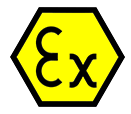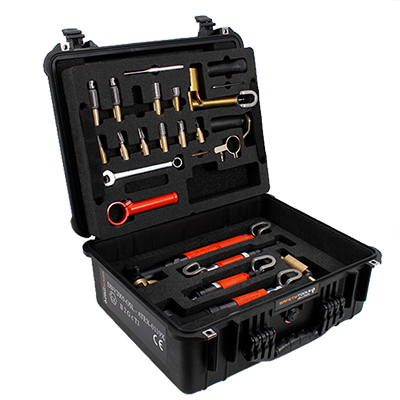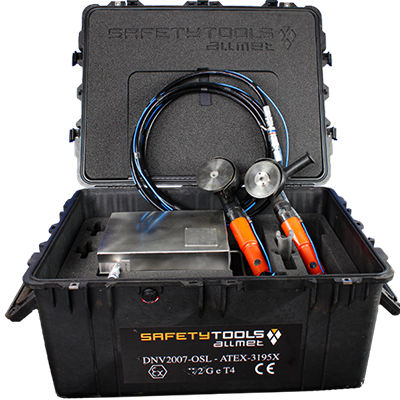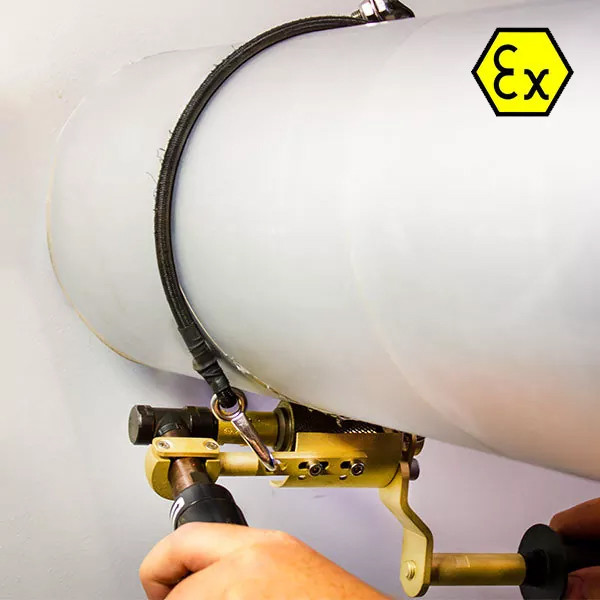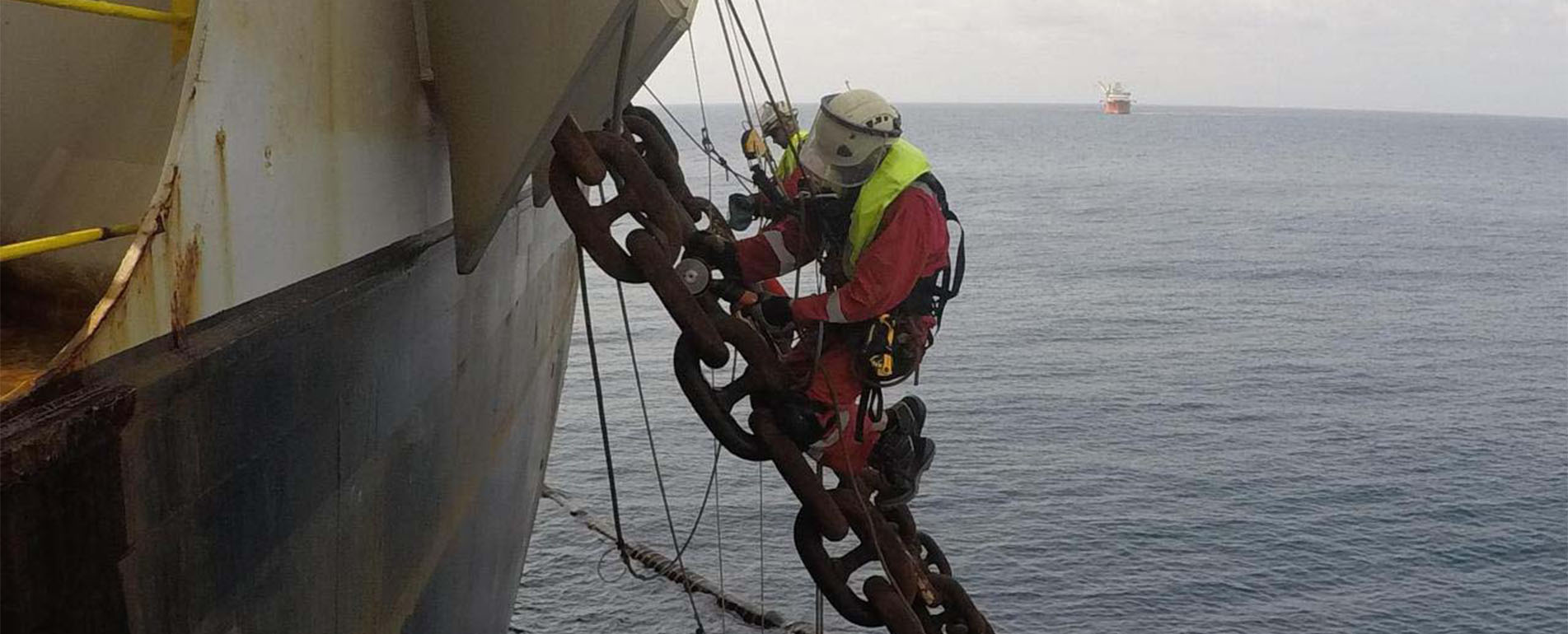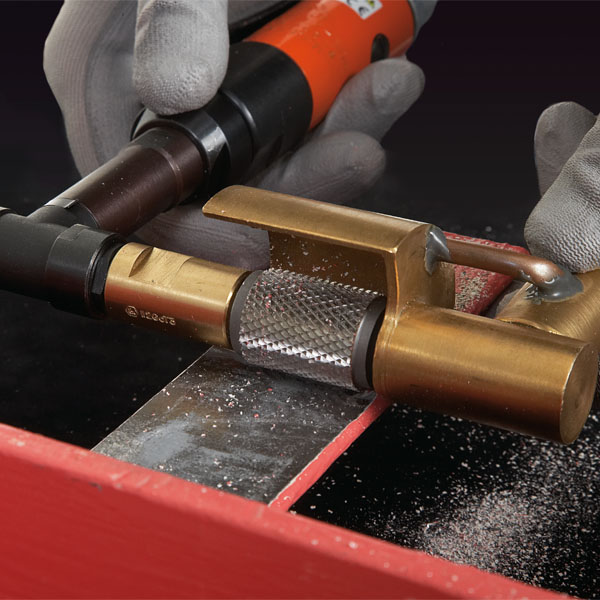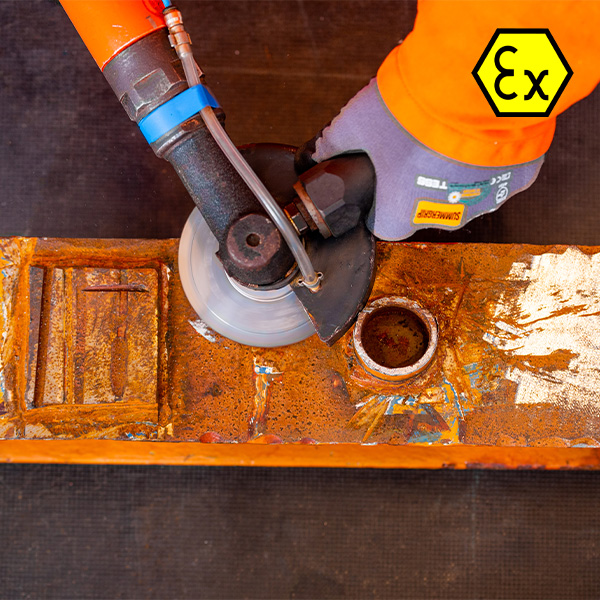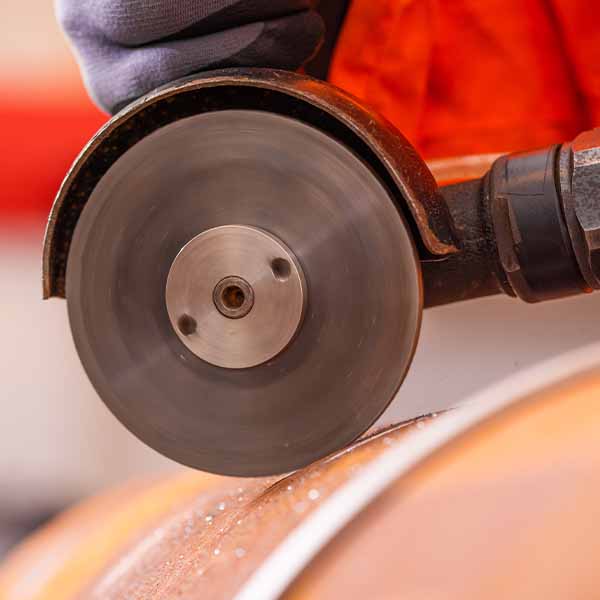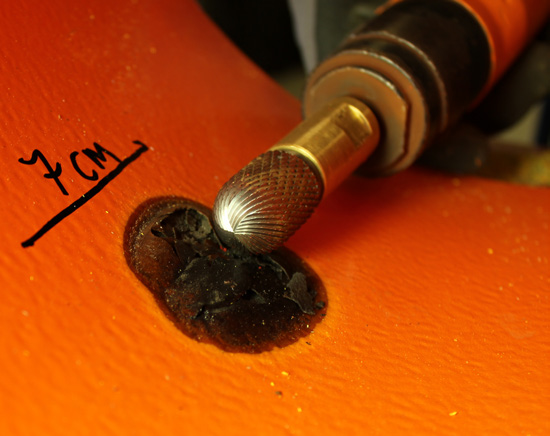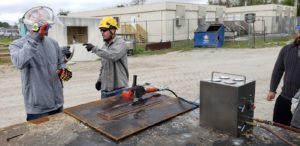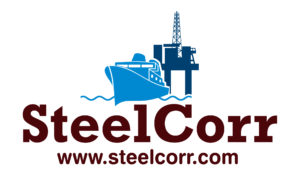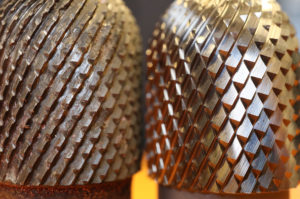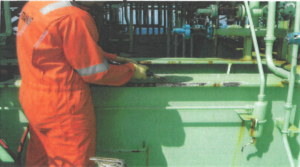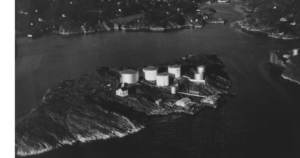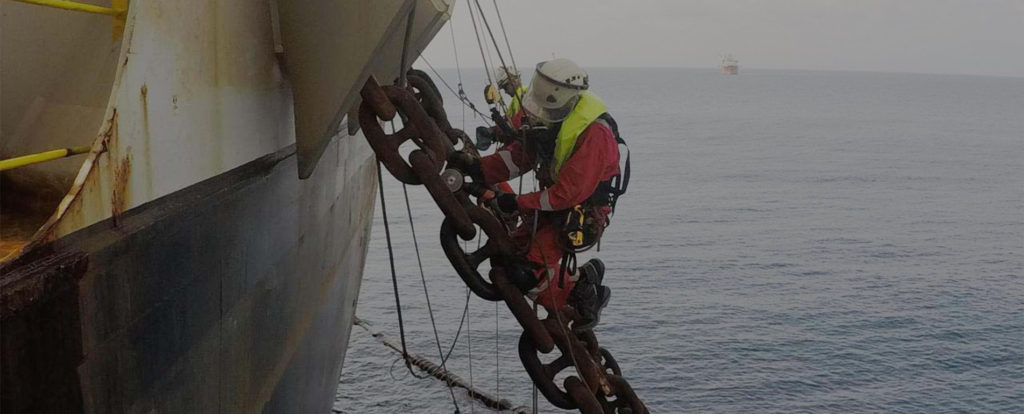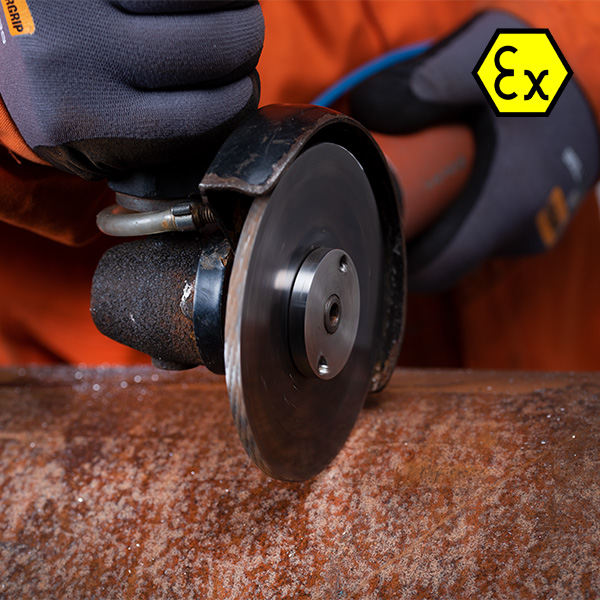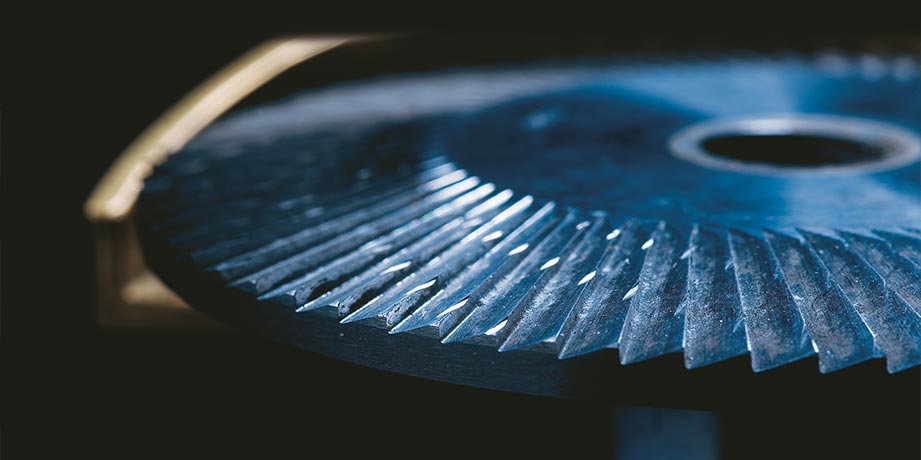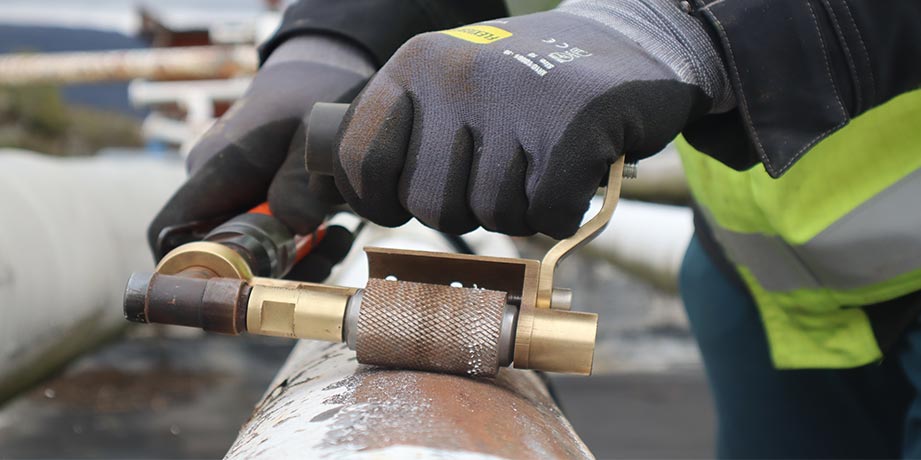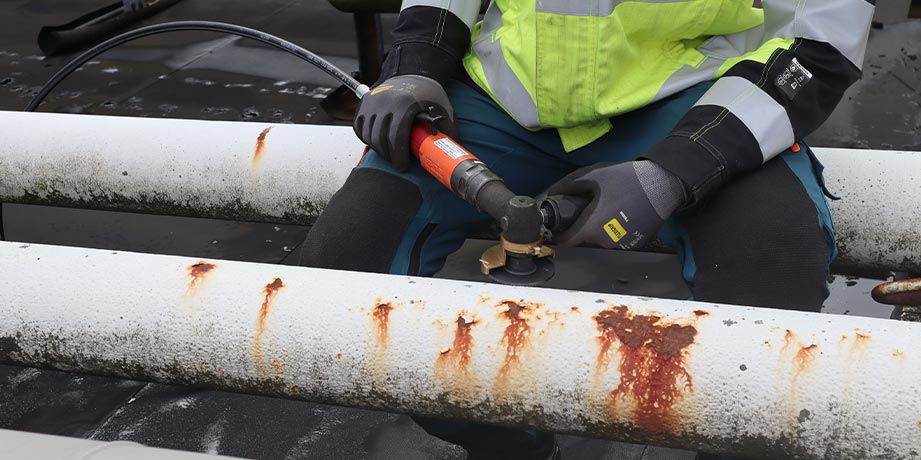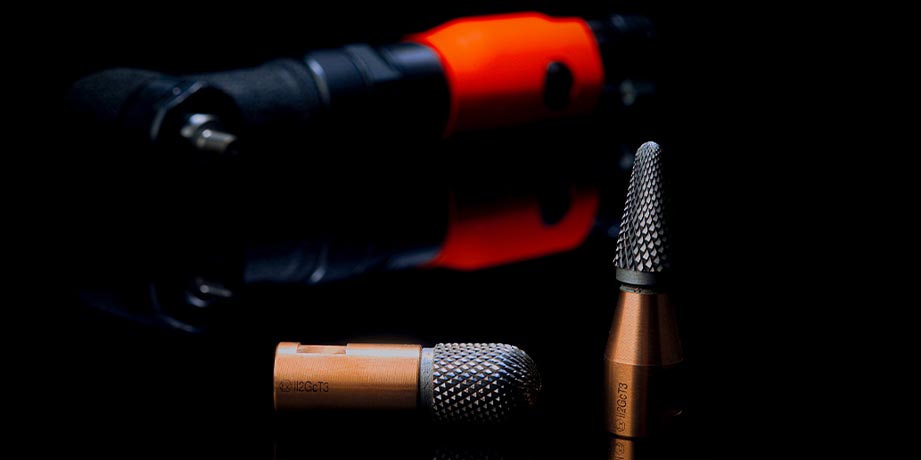Testing and Certification
Safety Tools Allmet has been committed to having testing and certification conducted by a third party since 1998.
On this page, you will find our current ATEX certificates and all tests conducted since our start.
ATEX Certificate Grinding tools
Certified and Classified by Gexcon Certification
Our cold solutions are safe to use in ATEX Gas Zones 1 & 2. Cutting tools are additionally certified for use in dust zones 21 & 22.
No need for work permits for hot work, habitats, fireguards, shutdowns, and nitrogen purging/flushing.
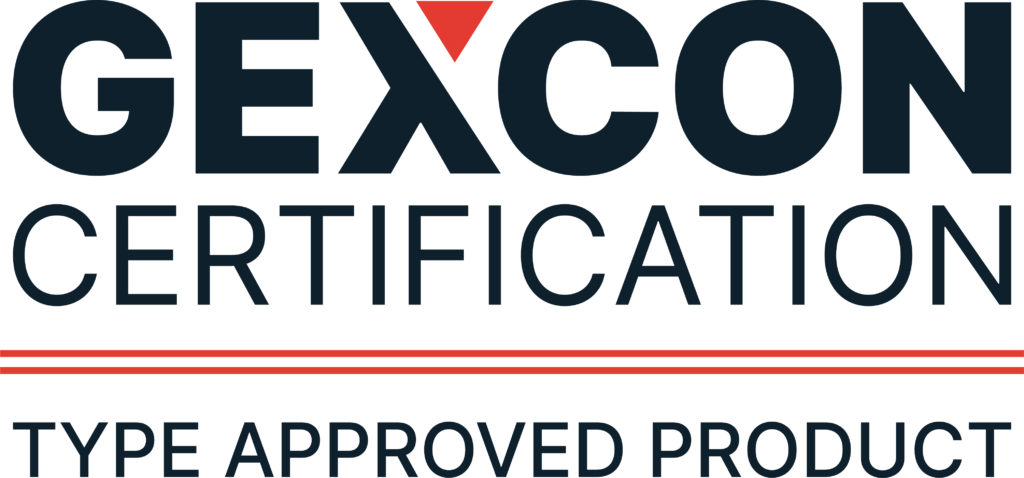
ATEX Certificate Cutting tools
Testing of Isocyanates – Institutet för Kemisk Analys Norden AB
A study was conducted at IFKAN in Hässleholm, Sweden, to assess emissions during the use of a rotating file for rust and paint removal. The results show no detectable isocyanate emissions, except for low concentrations of isocyanic acid.
Compared to angle grinders, the rotating file exhibits lower emissions of submicron particles. The technique appears promising, with an indication of reduced isocyanate emissions.
Isocyanate Emissions:
- No isocyanate emissions were detected, except for very low concentrations of isocyanic acid (ICA), during paint removal with the rotating file.
- Note: Paint dust produced may pose a potential exposure source if transported to areas with heat sources.
Particle Emissions:
- Emissions of submicron particles (smoke) during the use of a rotating file are significantly lower than when using angle grinders for paint and rust removal.
Promising Technique:
- The use of a rotating file for paint and rust removal shows promising results.
- Strong indication of reduced isocyanate emissions compared to “hot methods” like angle grinders and IR heaters.
International – Protective Coatings
Evaluation of Coating Application on Safety Tools Allmet – Prepared Surfaces
- Surface preparation with Safety Tools.
- Assessment of surface cleanliness.
- Application of various coatings.
- Thermal shock up to 120°C.
- Adhesion testing using pull-off and cross-cut adhesion tests.
Safety Tools, Number A-009 at 2000 RPM, resulted in a white metallic surface without damage.
The surfaces were prepared for the application of Interzinc 12, Intertherm 228, Interzone 954, and Interline 850.
Coating Application:
Coatings were applied with a conventional Air Assisted Gravity Feed Gun.
Specific DFT values measured according to SSPC-PA 2.
Adhesion Tests:
Adhesion tests in accordance with ASTM D4541 standard showed 100% pass for all tested coatings, with a minimum of 5 MPa.
ISO 2409 Adhesion Test:
All tested coatings achieved an adhesion rating of 0.
Conclusions:
Surfaces prepared with Safety Tools proved to be almost as good as fresh surfaces for applying coatings like Intertherm 228, Interzinc 12, and Interline 850. Coating adhesion was maintained after thermal shocks, indicating that surface cleanliness was suitable. Interzone 954 exhibited surface tolerance and performed well on less prepared surfaces. Expert advice is necessary to assess areas with clay-cracked coatings. Safety Tools may be beneficial in maintenance situations to achieve optimal performance with coatings like Interzone 954, Interseal 670 HS, and Interplus 256 or 356.
.
Adhesion Test for Coatings – Jotun
The Jotun report focuses on adhesion tests for various coating systems on sanded steel. The test, conducted in accordance with ISO 4624 standard, assesses adhesion by measuring the minimum tensile strength required to loosen or tear the coating in a direction perpendicular to the substrate.
Tests were performed using the Precision Adhesion Tester (P.A.T.) with 3.14 cm² glue dots. Results are expressed in MPa, and failures are described according to the standard, including adhesive failure between substrate and 1st coat (A/B), cohesive failure of 1st coat (B), adhesive failure between 1st and 2nd coat (B/C), cohesive failure of 2nd coat (C), and so on.
Materials tested included Barrier, Jotamastic Plus, Jotaproof Topcoat, Hardtop PSO, Tankguard 412, Jotamastic 87, Jotacote Universal, and Penguard Tiecoat 100. Panels were supplied pre-sanded, and coatings were applied with airless spray according to the respective product technical data sheets.
Results showed that all systems from Safety Tools Allmet exhibited good adhesion to the sanded steel substrates, as no adhesion failures were observed against the steel. The conclusion, dated June 13, 2006, confirms the generally strong adhesion for the tested coating systems.
Chevron report adhesion
Chevron Report on Adhesion
The Chevron report details a corrosion protection job using Huntsman Araldite, Carboline epoxy, and tools from Safety Tools Allmet. The job involves the application of various coatings (topcoat, intermediate coat, and primer) with specified specifications for each. Dry Film Thickness (DFT) measurements and inspections were conducted, and adhesion tests were performed using the Dolly method with specific tools. Surface profile and appearance were also meticulously documented.
Materials and Surface Preparation:
- Huntsman Araldite 2011A & 2011B adhesive used.
- Safety Tools utilized for surface preparation.
- Surface inspected with Positester, 0-BMR.
Coating System:
- Top Coat 134 and Intermediate 893 applied according to specifications.
- Readings of total Dry Film Thickness (DFT) conducted by J. L. LaRive.
Adhesion Tests:
- Adhesion tests performed with Dolly method and Elcometer 108.
- Dolly #1 showed adhesion failure at 1,550 lbs, mainly at Intermediate (89%).
Appearance and Inspection:
- Minor raindrops observed on top coatings due to a brief rain shower.
- Test plates inspected and profiled for appearance and thickness.
Conclusions and Recommendations:
The coating exhibits generally good adhesion, especially at the Intermediate layer.
Safety Tools demonstrate efficiency in surface preparation.
Minor aesthetic impacts due to rain.
Recommendations include any adjustments in application technique to minimize weather-related influences.
Noise test by Multiconsult
Noise Report: The report is prepared by Multiconsult AS on behalf of Safety Tools Allmet AS and concerns measurements of noise from a grinding and cutting system developed by Safety Tools Allmet AS. The measurements were conducted on June 18, 2007, by Ingrid Holst, a specialist engineer in acoustics. The report includes detailed results of the measurements, including average A-weighted sound pressure levels during various work operations, such as grinding and cutting of different materials like carbon steel and stainless steel. The measurements were performed outdoors under free-field conditions, and the report also provides information on measurement standards, definitions, requirements, and measures to reduce noise exposure in accordance with relevant standards and regulations.
Results:
- Grinding Wheel (No. A-0500) for paint removal with FUJI 10×51 motor (1000 rpm):
* Average A-weighted sound pressure level of 81 dBA at 1m distance from the grinding machine removing paint from a 10 mm thick carbon steel plate (st 52). - Grinding Wheel (No. A-0500) for paint removal with FUJI 10×51 motor (1000 rpm):
* Average A-weighted sound pressure level of 85 dBA at 1m distance from the grinding machine removing paint from a 10 mm thick stainless steel plate (316). - Grinding Wheel (No. A-0502) for weld seam removal with Atlas Copco LSV 28 STO 08-01 motor (800 rpm):
* Average A-weighted sound pressure level of 84 dBA at 1m distance from the grinding machine removing weld seam from a 10 mm thick carbon steel plate (st 52). - Cutting for steel (No. A-0504) with Atlas Copco LSV 28 STO 08-01 motor (800 rpm):
* Average A-weighted sound pressure level of 85 dBA at 1m distance from the cutting machine cutting a 10 mm thick carbon steel plate (st 52). - Cutting for steel (No. A-0504) with Atlas Copco LSV 28 STO 08-01 motor (800 rpm):
* Average A-weighted sound pressure level of 88 dBA at 1m distance from the cutting machine cutting a 10 mm thick stainless steel plate (316).
Comments: Measurements were conducted outdoors under free-field conditions. The results indicate that noise levels may vary in indoor environments depending on acoustic conditions. This could impact actual sound pressure levels and should be considered in similar indoor measurements. Recommendations include measures to reduce noise exposure and the use of hearing protection if needed, especially if the noise level is perceived as bothersome.
Do not take our word for it;
Recommended Usage Areas
Our cold technology is used in many sectors, including oil and gas, petrochemical, steel construction, and shipbuilding. In addition to maintenance work on bridges and offshore installations.
Below you can find our project pages.
Cold Solutions - ATEX Certified

Health, Safety & the Environment
Products comply with Health Safety & the Environment (HSE & OSHA) requirements, offering low vibration, heat, and noise levels. The fragments are large and blunt and will stay within a few centimetres/inches of your work area, thus making cleaning up simple and safe.
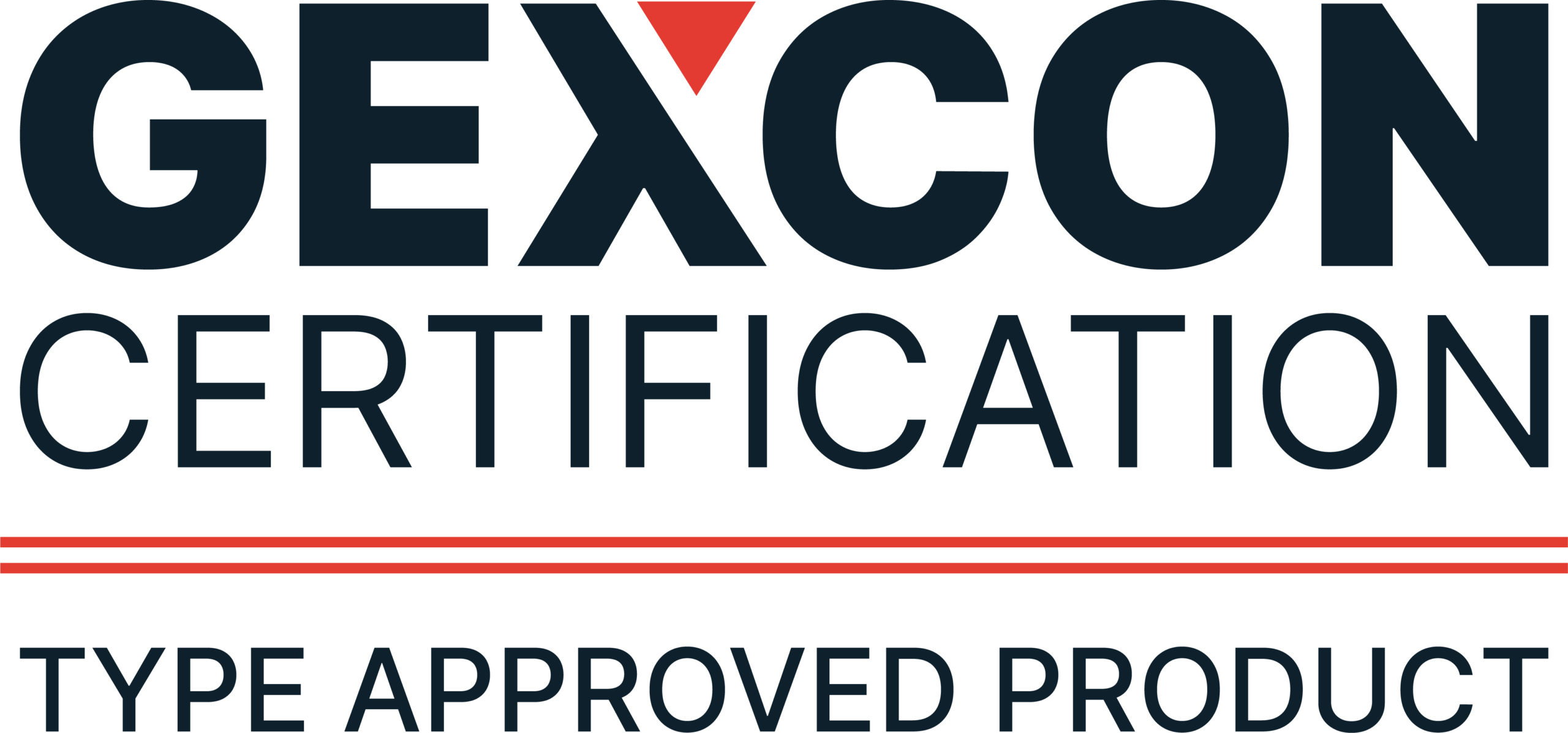
Certified and classified by Gexcon Certification
All solutions from Safety Tools Allmet are ATEX Certified as safe to use in ATEX Gas zones 1 & 2. Our cutting tools are also certified for use in ATEX dust zones 21 & 22. No need for a hot work permit, habitats, fire guards, shutdowns and nitrogen flushing/flushing.
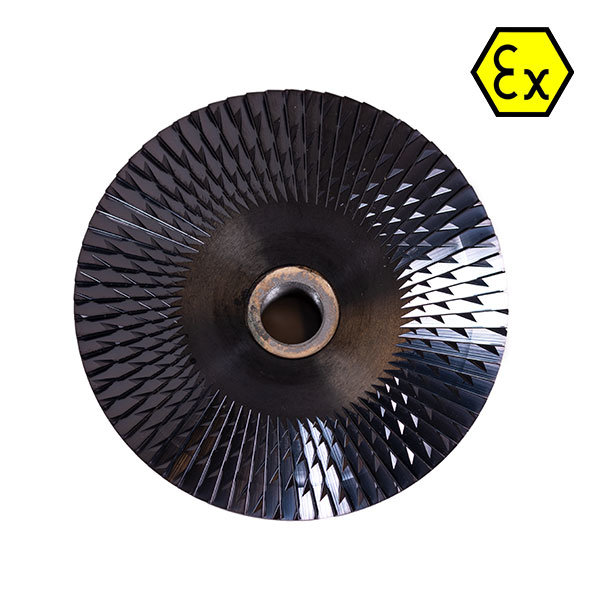
Tungsten Carbide
Our rotating files and discs consist of solid tungsten carbide. The hardness and design of the teeth significantly increase the lifetime of the grinding files and discs. You can expect a lifetime of 100 times more than conventional burrs.
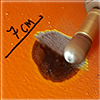
Spot Repair
Ex-certified cold work tools from Safety Tools Allmet provide a good, clean surface with a profile that meets the requirements of the SSPC-SP11 Surface Preparation Standard.
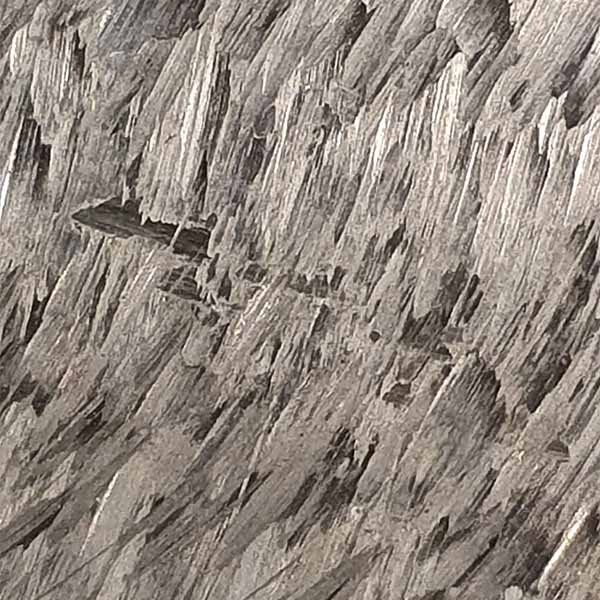
Surface profile
The solid tungsten head for Safety Tools cold rotating grinding files has different designs on its teeth so that they can produce different surface profiles for every situation. Our burrs create a roughness profile of between 40 – 75 microns.
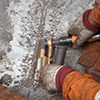
Adhesion and Cleanliness
The correct surface profile creates a suitable anchor for paint and coatings. ATEX grinding tools from Safety Tools Allmet create good adhesion and a clean surface. Extensively independently tested for surface adhesion by International Paint, Jotun, Chevron and Weatherford.
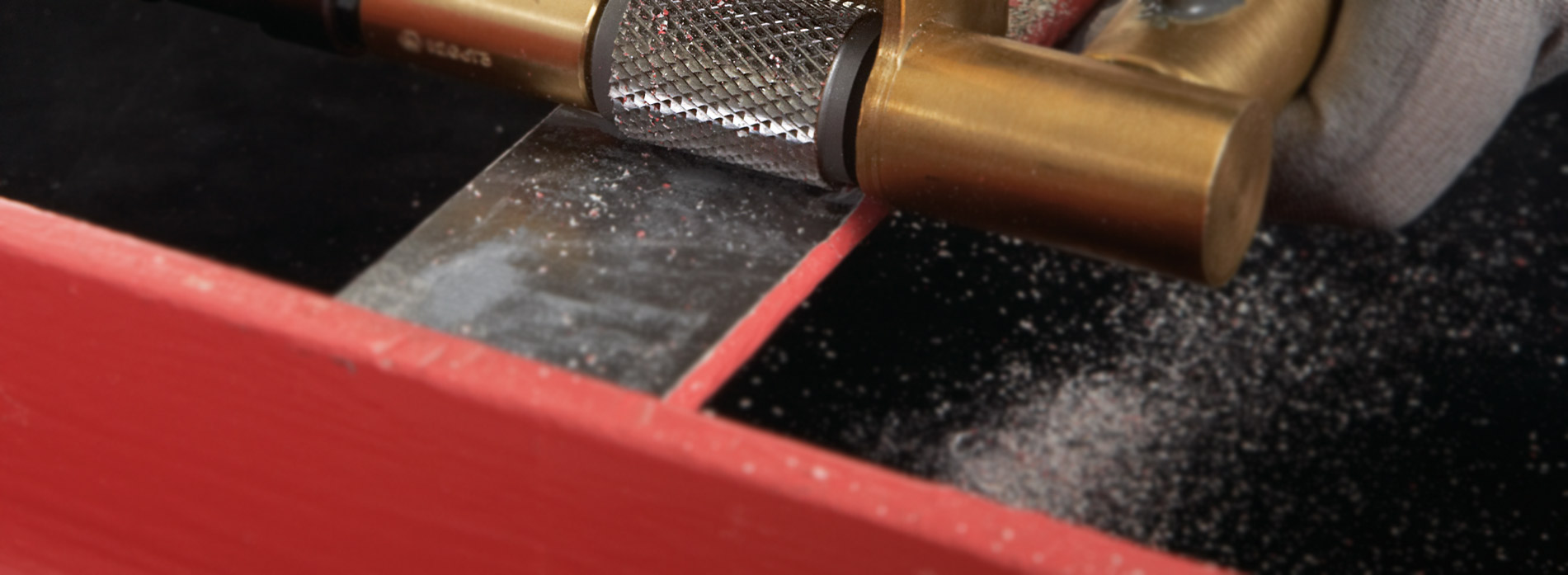
NO Isocyanates - LOW Sound levels - LOW Vibration
NO release of isocyanates when grinding or cutting through polyurethane.
Low sound level. (<85 dB)
Low vibration. (Average <2.5 m/s)
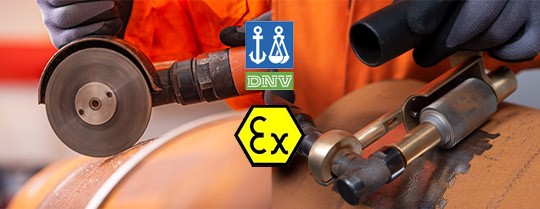
Safety Tools Allmet - Since 1998
We are experts in training, usage and maintenance of our cold solutions. We can document years worth of good feedback from customers worldwide.
Other pages with documentation and information
Instructional videos and user manuals
-> User manuals
--> Pneumatic tools drawings
Reccomended usage areas
Blog
Products and product information
Safety Tools Allmet online

